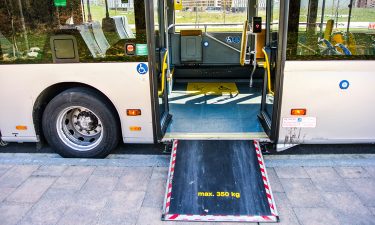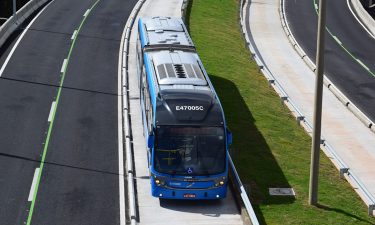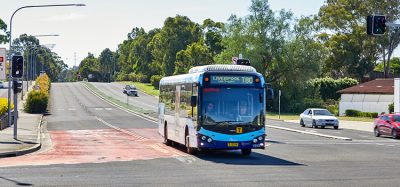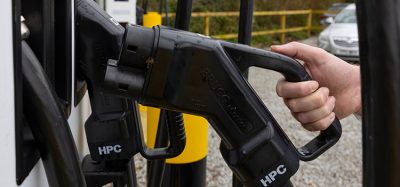Enhancing American mobility
- Like
- Digg
- Del
- Tumblr
- VKontakte
- Buffer
- Love This
- Odnoklassniki
- Meneame
- Blogger
- Amazon
- Yahoo Mail
- Gmail
- AOL
- Newsvine
- HackerNews
- Evernote
- MySpace
- Mail.ru
- Viadeo
- Line
- Comments
- Yummly
- SMS
- Viber
- Telegram
- Subscribe
- Skype
- Facebook Messenger
- Kakao
- LiveJournal
- Yammer
- Edgar
- Fintel
- Mix
- Instapaper
- Copy Link
Posted: 5 June 2020 | Carol Schweiger - Schweiger Consulting | No comments yet
Carol Schweiger details the ways in which transport agencies across the U.S. are taking advantage of the grants made available as part of the U.S. Department for Transport’s (USDOT) Integrated Mobility Innovation (IMI) programme.


Public transport automation includes “technologies [that] enable systems in which at least one element of vehicle control (e.g. steering or speed control) occurs without direct driver input. This could enable driver assistance features like lane-keeping, precision docking and automatic emergency braking.”2
As identified in an MPI State-of-the-Practice Scan that was published by FTA in October 2019, “four types of payment integration that [have been] implemented [in the U.S.] are (1) use of a shared payment technology (payment integration and/or payment medium); (2) integrated or linked mobile apps; (3) common or linked payment accounts; and (4) multimodal incentives or co-marketing.”3
On 16 March 2020, the U.S. Department of Transportation’s (USDOT’s) Federal Transit Administration (FTA) announced that $20.4 million would be granted to 25 technology-enabled mobility projects in the Integrated Mobility Innovation (IMI) programme.
The overall goals of the programme are to: explore new business approaches and emerging technology solutions that support transformational mobility services; enable communities to adopt innovative mobility solutions that enhance transportation efficiency and effectiveness; and facilitate the widespread deployment of proven mobility solutions that foster expanded personal mobility.
The IMI programme resulted from the evolution of USDOT programmes including Mobility Services for All Americans (MSAA), Integrated Corridor Management (ICM), Mobility on Demand (MOD), Accessible Transportation Technologies Research Initiative (ATTRI), Strategic Transit Automation Research (STAR) and Mobility Payment Integration (MPI). Each of these programmes has yielded significant lessons that will now be applied through the IMI programme projects.


Public transport automation includes “technologies [that] enable systems in which at least one element of vehicle control (e.g. steering or speed control) occurs without direct driver input. This could enable driver assistance features like lane-keeping, precision docking and automatic emergency braking.”2
As identified in an MPI State-of-the-Practice Scan that was published by FTA in October 2019, “four types of payment integration that [have been] implemented [in the U.S.] are (1) use of a shared payment technology (payment integration and/or payment medium); (2) integrated or linked mobile apps; (3) common or linked payment accounts; and (4) multimodal incentives or co-marketing.”3
Within the MOD category, the projects focus on: (1) building on the first round of MOD Sandbox projects4; (2) better connecting travellers to the overall transportation network; (3) exploring new MOD accessibility models; and (4) examining data sharing and data collection methods allowing better understanding of the impacts of transportation (economic, societal, personal).1 In the public transport automation category, the projects will provide demonstrations of automated shuttles and automated driver assistance. In the MPI category, the projects will leverage retail models of payment for public transport systems and integrate regional payment practices such as single regional payment platforms.
The IMI projects stretch across the U.S. from Alaska to Maine and Minnesota to Texas, generally covering three areas: MOD, public transport automation and MPI
The funding levels vary from $150,000 for Kootenai County, Idaho to $2 million for Connecticut Department of Transportation (CTDOT). Kootenai County will receive funding to explore an open architecture fare payment system. The project will close gaps in transportation services in Idaho’s second-most populous region, while determining cost effective and efficient transportation options and solutions for riders. CTDOT will test automated, electric buses on its CTfastrack bus rapid transit corridor to improve safety for riders with disabilities. Precision, automated docking and platooning will eliminate driver errors that result in wide platform gaps and other unsafe situations, and will also reduce delays.5
Tompkins County, New York
In this article, I am highlighting three IMI projects – one from each category described earlier. The first is from Tompkins County, New York. Tompkins County has a population of 103,000 and is located in the Central Southern Tier of New York State. The County’s non-farm workforce totals 67,000 jobs. A small urban city, Ithaca, centrally located in the county, is surrounded by rural towns. Tompkins County adjoins five rural counties and one small urban/rural county. Over 15,000 people (23 per cent of nonfarm jobs) commute to Tompkins County daily to work, while 5,000 County residents commute outside of Tompkins Co. The existing mobility services in the County directly reflect the geographic, economic, labour and housing supply, but also result in challenges faced by lower income and vulnerable populations. Finally, one of the most significant positive elements of conducting an innovative mobility project in the County is the collaborative and pragmatic nature of all County transportation stakeholders.6


From June 2018 to November 2019, Tompkins County participated in the FTA’s MOD On-Ramp Program to convert its MaaS concept into a multi-phase project. The results of their On-Ramp Program project created manageable phases and signalled the beginning of system development.
Phase 1, which will be funded by the new IMI grant ($820,000), consists of four major tasks: (1) develop a multimodal trip-planning platform to integrate travel information from mobility providers and enable access through a smartphone app and web platforms; (2) implement a call centre to answer inquiries by telephone, text and chat (by computer) 24/7; (3) deploy a guaranteed ride programme for Tompkins County residents and people travelling to Tompkins County; and (4) develop a rural first-mile/last-mile service pilot extending the range of Tompkins Consolidated Area Transit (TCAT) Route 43 with Gadabout demand-response service in a project area (in the rural village and town of Dryden).
The evolution of technology-enabled mobility programmes at USDOT and FTA is continuing with the IMI programme and beyond by recognising the importance of the ‘complete trip’
Phase 2, which will build on the foundation developed in the IMI-funded Phase 1, is expected to implement key MaaS elements including creating a member organisation, deploying financial services and enhancing customer service (beyond the call centre). Initially, the MaaS concept for Tompkins County includes customisable monthly mobility subscriptions – Phase 2 will provide the back-office infrastructure and other services needed to offer travellers these subscriptions.
Tri-County Metropolitan Transportation District of Oregon (TriMet)
The second IMI project is for Tri-County Metropolitan Transportation District of Oregon (TriMet) in Portland. Their IMI project, which is funded at $1.8 million, is “develop[ing] a mobility payment system that integrates payment for multiple modes into a single transaction. The project will build on TriMet’s multimodal trip planner to reduce travel stress with better real‑time arrival predictions.”5 TriMet’s multimodal trip planner was funded, in part, by a MOD Sandbox grant – this project was conducted from January 2017 to January 2019.
“Created in 1969, TriMet is a special district of the State of Oregon, governed by a seven-member Board appointed by the Governor. TriMet serves a population of approximately 1.8 million in the 533 square miles of the urban portion of the three‑county Portland metropolitan area. It provides a full range of services through five light rail lines (MAX), some 84 bus routes, and a commuter rail line (WES).”5


“TriMet’s project include[d] the development and expansion of two core data frameworks that current and future collaborative OTP initiatives can be built upon, producing replicable software and results for communities across the [U.S.]. These two foundational core project elements [we]re to:
- Extend OTP code base to support the integration of transit trip planning with shared-use mobility modes, such as bike share and transportation network companies (TNCs), as well as updated real-time transit information
- Implement a fully functional and comprehensive open geocoder built off the existing Pelias geocoder. Geocoding, or address locating, is a primary requirement for trip planning. A non-proprietary and non-restrictive option for address locating would substantially lower the barrier to entry for many transit.” [Eval Plan]
The MOD Sandbox project resulted in an open and comprehensive trip planner with the following features8:
- “Adjustments to transit trips are made based on real-time information
- The Book Ride button makes it easy to confirm, book and pay for Uber trips (and TriMet plans to provide further integration in the future [through the IMI project])
- In addition to providing bike and walk only trips, BIKETOWN trips can be planned both on their own and combined with transit. Information regarding available bikes and docks are available in real-time. Bike trips can also be optimised for speed, bike-friendly or flattest trip
- Additional modes include Zipcar. Others, such as e-scooters, will be added as these services become available in [Portland]
- Mapping layers include detailed aerial imagery, Zipcar locations, and more
- Improved sidewalk data supports more comfortable pedestrian routing
- The address locator (geocoder) was also improved with more local destinations and better recognition of addresses. A fully functional and comprehensive open geocoder, built off the existing Mapzen Pelias geocoder, was implemented. This non-proprietary and non-restrictive option for address locating substantially lowers the barrier to entry for many transit systems to offer trip planning, and can achieve significant cost savings for transit agencies, government agencies, and the public.”
Also, the IMI project is based on TriMet’s Hop Fastpass – its open architecture fare payment system that first launched in 2017. Open architecture design provides the flexibility to adjust individual software and hardware components; allows TriMet to capitalise on changing technologies or falling costs; and avoided negotiations with a systems integrator that could minimise (or profit from) changes to fare payment system over time. Currently, this system allows physical cards that work on TriMet, C-TRAN (Clark County, WA) and the Portland Streetcar; and open payments including a payment card with embedded contactless chip, Apple Pay, Google Pay and Samsung Pay. Hop provides the following benefits no matter which payment media is used (1) fare capping; (2) autoloading; (3) monthly passes; (4) concession fares; and (5) add value online, by visiting regional transit ticket offices, making a phone call, via mobile app or at more than 500 stores that are part of the Hop retail network.9
Connecticut Department of Transportation (CTDOT)
The third IMI project is the testing of automated and electric buses by CTDOT on the “CTfastrack bus rapid transit (BRT) corridor to improve safety for riders with disabilities. Precision, automated docking and platooning will eliminate driver errors that result in wide platform gaps and other unsafe situations and also will reduce delays.” The IMI grant to CTDOT is $2 million.5 CTfastrak is the first BRT system in Connecticut and provides service to and from several communities via 12 routes.
CTfastrak connects with local CTtransit services, making it easy for travellers to make transfers. The key feature of CTfastrak that facilitates the testing of full-size and accessible automated buses operating at higher speeds is the bus-only roadway on which it operates.
CTDOT is a member of the US Automated Bus Consortium (ABC), which is “an association of transit and transportation agencies [that are] collaborati[ng] to investigate the feasibility of implementing automated bus projects across the United States. The Consortium is a first-of-its-kind approach to accelerate the development of automated transit technologies and will combine the purchasing power and collaborative decision making of these founding transit agencies nationwide.”10 ABC members are striving to collectively demonstrate and deploy automated technologies in live service environments.
The evolution of technology-enabled mobility programmes at USDOT and FTA is continuing with the IMI programme and beyond by recognising the importance of the ‘complete trip’. As I described in a prior article for Intelligent Transport, the complete trip has a number of components or trip stages that begin with trip planning and end with the traveller’s arrival at their destination. At each trip stage, a traveller’s needs for information using technology will change. On 18 March 2020, FTA issued a Notice of Funding Opportunity (NOFO) for Accelerating Innovative Mobility (AIM) Challenge Grants. FTA plans to grant multiple awards for a total of $11 million.
The underlying principles of AIM are: (1) projects of national significance that advance the state of the practice; (2) considers needs of all types of communities – urban, suburban, rural; (3) leverages private sector innovation; (4) advances robust, replicable business models; and (5) supports the concept of the complete trip to ensure all travellers benefit.11
Beyond AIM is “a new [USDOT]-wide initiative to expand access to transportation for people with disabilities, older adults, and individuals of low income. [This initiative] supports communities in developing innovative integrated technologies and creating public-private partnerships to move towards complete trip deployments”12. The funding for the first phase of this programme (concept development), called the ‘Complete Trip ITS4US Deployment Program’, is expected to be announced in Summer 2020.
The key components of this new programme are as follows12:
- Complete trip deployments will be real-world environment deployments
- If successful, deployed technologies are expected to remain as permanent operational elements
- Successful sites will serve as replicable models for other candidate deployers
- There will be multiple complete trip deployments
- Each site will have different solutions based on their population travel needs
- Deployments must address their populations’ challenges of planning and executing complete trips
- The unique needs of each site must drive the deployment process
- Complete trip deployments are expected to be both large-scale and multimodal
- Large-scale implies deployments will have measurable impact, not a specific minimum geographic size
- Sites will deploy multiple technologies and modes.
References
1. Robert Sheehan, “Advancing Complete Trips for All,” presentation at 2019 International Conference on Demand Responsive and Innovative Transportation Services, April 16, 2019, Baltimore, MD
2. “FTA Transit Bus Automation Overview Factsheet: Transit Bus Automation Overview,” February 2018, https://www.transit.dot.gov/sites/…
3. Ingrid Bartinique and Joshua Hassol, Mobility Payment Integration: State-of-the-Practice Scan, prepared for FTA, Report No. 0143, October 2019, page 22, https://www.transit.dot.gov/sites/…
4. Eleven MOD “Sandbox” projects totaling approximately $8 million USD began in 2016. The purpose of these projects was to demonstrate integrated MOD concepts and solutions in real-world settings supported through local partnerships. “Researchers [are] assess[ing] each of the 11 MOD Sandbox Program projects based on performance measures provided by the project partners, as well as an independent evaluation. Each report will address the project evaluation approach and process and data collection and analyses.” (https://www.transit.dot.gov…)
5. https://www.transit.dot.gov/…
6. Excerpt from IMI Demonstration Research Program: Tompkins County Applicant and Proposal Profile
7. Gustave Cordahi, Susan Shaheen, Elliot Martin and Mikaela Hoffman-Stapleton, MOD Sandbox Demonstrations Independent Evaluation (IE) Tri-County Metropolitan (TriMet) Transportation District of Oregon — OpenTripPlanner Shared-Use Mobility (OTP SUM) Evaluation Plan, prepared for FTA, October 2018, Report No. FHWA-JPO-18-695, https://rosap.ntl.bts.gov/view…
9. Carol Schweiger, Module 23: Leveraging Communications Technologies for Transit Onboard Integration, prepared for the USDOT ITS Joint Program Office Professional Capacity Building Program, ITS Standards Transit Training, soon to be posted to https://www.pcb.its.dot.gov/stds_modules_transit.aspx
10. http://www.automatedbusconsortium.com/
11. Accelerating Innovative Mobility (AIM) Challenge Grants Webinar, Notice of Funding Opportunity, Opportunity ID: FTA-2020-012-TRI-AIM, held April 2, 2020
12. Webinar #1: Overview of the Complete Trip -ITS4US Deployment Program, held on January 30, 2020, https://www.its.dot.gov/its4us/pdf/its4us_webinar_1.pdfx
Biography
Carol Schweiger is the President of Schweiger Consulting and Chairperson of the New England Intelligent Transportation Society. She is internationally recognised in transportation technology consulting, providing over 55 transportation agencies with technology technical assistance. She has authored numerous Transit Cooperative Research Program (TCRP) Synthesis reports and full TCRP reports. She currently serves as co-Chair of the Transportation Research Board (TRB) Committee on Emerging and Innovative Public Transport and Technologies, a Charter Member of the Public Transportation Systems and Services (PTSS) Committee of the Intelligent Transportation Society of America and member of the International Program Committee of the ITS World Congress and TRB ITS Committee.
Related topics
Fleet Management & Maintenance, Infrastructure & Urban Planning, Intelligent Transport Systems (ITS), Mobility Services, Multimodality, Sustainable Urban Transport
Issue
Issue 2 2020
Related cities
USA
Related organisations
Schweiger Consulting LLC, U.S. Department of Transportation (USDOT)








